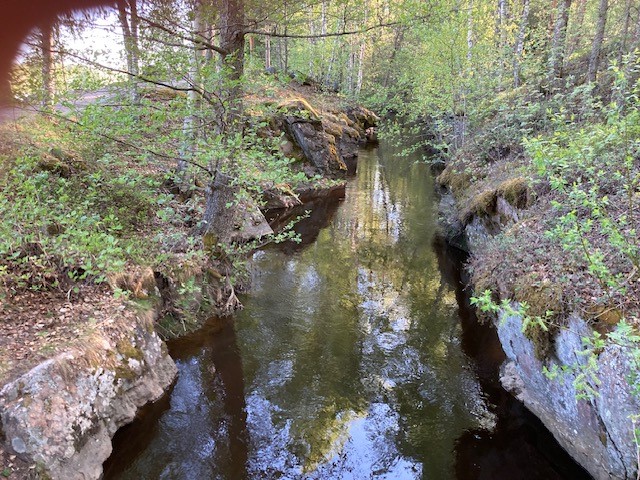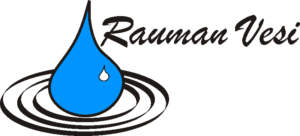Frequently Asked Questions

Water’s Journey from Raw Water to Household Water
Where does Rauma’s water come from?
The plant will use either Lapinjoki or Eurajoki water as raw water. The raw water reservoir is Äyhönjärvi.
Lapinjoki water is discharged through a canal owned by UPM and the City of Rauma to the north-eastern part of the raw water reservoir. Eurajoki water is pumped to the north-western part of the basin by a pumping system owned by the plant. The pumping system consists of a pumping station at Pappilankoski in Eurajoki, an intermediate tank at Koivuniemi, and a measuring and valve station at the discharge end. Water from the Eurajoki can also be taken directly to the plant, bypassing the raw water reservoir. This option is intended as a back-up system in cases where the raw water reservoir cannot be used. In dry periods, the Eurajoki will be fed with compensatory water from the Kokemäenjoki.
The aim is to use the highest possible quality of river water as raw water, taking into account economic considerations.
How is Rauma’s drinking water treated?
The plant’s process is a two-step process. The first stage is a vertical clarification plant. Precipitation takes place at pH 5. Impurities such as heavy metals, organic matter and phosphorus are precipitated from the water using ferrisulphate. At the water plant, the pH is adjusted with quicklime at several different points. A polymer is used to help settle the sludge during the cold water period.
The second stage is the flotation plant. In the flotation plant, precipitation takes place at the same pH with the same chemicals as in the vertical sedimentation plant. In this stage, manganese is oxidised and the water is mainly disinfected with sodium hypochlorite, alkalinity is increased with carbon dioxide and ammonium is added with ammonium sulphate. The ammonium sulphate and sodium hypochlorite together form chlorine bound in water, i.e. chloramine, which acts as a mild disinfectant, inhibiting the growth of bacteria in the distribution network.
Finally, the water is filtered through sand and activated carbon filters. There are five sand filters and four carbon filters. This guarantees the safety, odourlessness and tastelessness of household water, even in times of problematic raw water.
The plant operates for 16 hours a day, during which time the water is prepared for the consumers and the water tower’s water level is raised to an agreed height for consumption the following night.
Does all the water go through the water tower?
The tower is used by the water utility to balance the pressure in the network and to store water for night consumption. In other words, not all water passes through the tower.
How much water is in the water tower?
The water volume of the water tower is about 2 000 m³.
Water Quality
Water quality before and after treatment?
Rauma Water’s raw water is surface water taken from the Lapinjoki and Eurajoki rivers. The organic matter content of Eurajoki water is low, below 40 mg/l on average, but during heavy rainfall it can occasionally rise to over 100 mg/l. The Lapinjoki has a higher organic matter content than the Eurajoki, around 50-80 mg/l. The permanganate value, i.e. the organic matter content after treatment, is between 4 and 7 mg/l. The target value for drinking water under the Directive is < 20 mg/l KMnO4. Organic matter is not harmful to health, but at high concentrations it causes colour and taste problems.
Ammonium nitrogen (NH4-N) concentrations are low on average in both rivers, below 0.20 mg/l, but occasionally maximum concentrations may be higher. After treatment, the concentration is 0.02 mg/l. The limit value for ammonium nitrogen is 0.40 mg/l. At high concentrations, ammonium causes a pungent smell or taste in the water.
There are no known adverse health effects of chloride, but the recommended concentration for drinking water is 25 mg/l to prevent taste and corrosion of plumbing materials. In Rauma, the chloride content of drinking water is about half of this.
The plant meets all the requirements for drinking water.
Why does water taste and smell of chlorine?
Surface water is disinfected with sodium hypochlorite, which protects the microbiological quality of the water in the distribution network. It gradually deteriorates (oxidises) in the network. The chlorine content is influenced by the temperature of the water and the length of time it remains in the network. Raw water is coldest in the network in winter, when chlorine is better preserved than during the warm water period. Chlorine levels are monitored continuously. The water meets all the requirements for household water and can be used normally. Most people do not smell or taste low levels of chlorine, but some can detect even small changes. If the smell and taste are off-putting, the water can be left to stand in an open container in the fridge or on the table before use. Another option is to boil the water, which evaporates the chlorine more quickly.
Why is the water sometimes cloudy?
Almost always, turbidity is caused by small air bubbles in the water. These are harmless and are removed by leaving the water still for a while.
How hard is Rauma’s domestic water?
The hardness of water, the amount of calcium (quicklime) and magnesium in water, is expressed either in German degrees (°dH) or in millimoles (mmol/l). 1 °dH = 0.18 mmol/l.
The water in Rauma is medium hard. The total hardness ranges from 7 to 11 °dH (1,2 to 1,9 mmol/l).
Water Prices and Consumption in the Rauma Area
How much does water cost?
Up-to-date tariffs can be found on the City of Rauma website in the collection of regulations and on Rauma Water’s website in the Payments section.
How much water is consumed in Rauma per year?
In 2023, about 3 100 000 m³ of household water was pumped into the network, of which about 2 500 000 m³ was sold, an average of 6 900 m³ per day.
There is no Water
No water or water quality problems, what should I do?
First of all, you should find out whether the building company is carrying out any repair work that could be the cause of the outage. Plumbing work in a residential area can also temporarily affect the water supply. You can find out about these by calling the water supply network’s maintenance supervisor during office hours. Outside office hours, you can report faults to the Water and Sewerage Network Fault Helpline on 02 822 0522.
There is no hot water, what should I do?
In the case of apartment blocks or terraced houses, contact the property’s maintenance company. In the case of a detached house, check the hot water boiler or district heating exchanger and, if necessary, contact the relevant service company. Rauma Water only supplies cold water, the heating is the responsibility of the housing associations themselves.
Waste Water
Can food scraps or other rubbish be put down the drain?
No, it can’t. The sewer is intended only for the transport of waste water, and solid waste is a burden on the treatment plant and can cause blockages in pipes and pumps. The fat in food solidifies easily, causing problems in the sewer. Putting toilet paper down the drain is allowed as it is made to be biodegradable in the sewer.
How does the wastewater go to the treatment plant?
Rauma’s municipal wastewater flows through an underground pipeline via the Maanpää wastewater treatment plant to the treatment plant. The plant has around 105 pumping stations and 10 rainwater pumping stations. The so-called main pumping stations are Sampaanala and Vähämaa.
Lappi has been connected to the sewerage network since 2000. Wastewater from Eurajoki is pumped to Rauma via the Eurajoki-Rauma transfer sewer/pumping line.
How is Rauma’s waste water treated?
Wastewater from the city of Rauma and Eurajoki is pre-treated at the Maanpää wastewater treatment plant. The pre-treatment includes screening and sand separation.
After pre-treatment, the wastewater is pumped to the forest industry wastewater treatment plant for joint treatment. The aim of the co-treatment is to reduce the nutrient load of nitrogen in the sea area by about half compared to separate treatment.
Rauma Water has 14 000 m³/d of treatment capacity of the forest industry. If capacity permits, a maximum of 24 000 m³/d of waste water can be discharged to the forestry treatment plant. If the above quantities are exceeded, or if for technical reasons it is not possible to discharge waste water to the industrial treatment plant, the permit condition requires that the waste water discharged into the sea be chemically treated at the municipal treatment plant.
How will the impact of waste water on the waters off Rauma be studied?
Lounais-Suomen vesi- ja ympäristötutkimus Oy will carry out monitoring surveys in the Rauma sea area in accordance with a programme approved by the Environment Centre of Southwest Finland.
